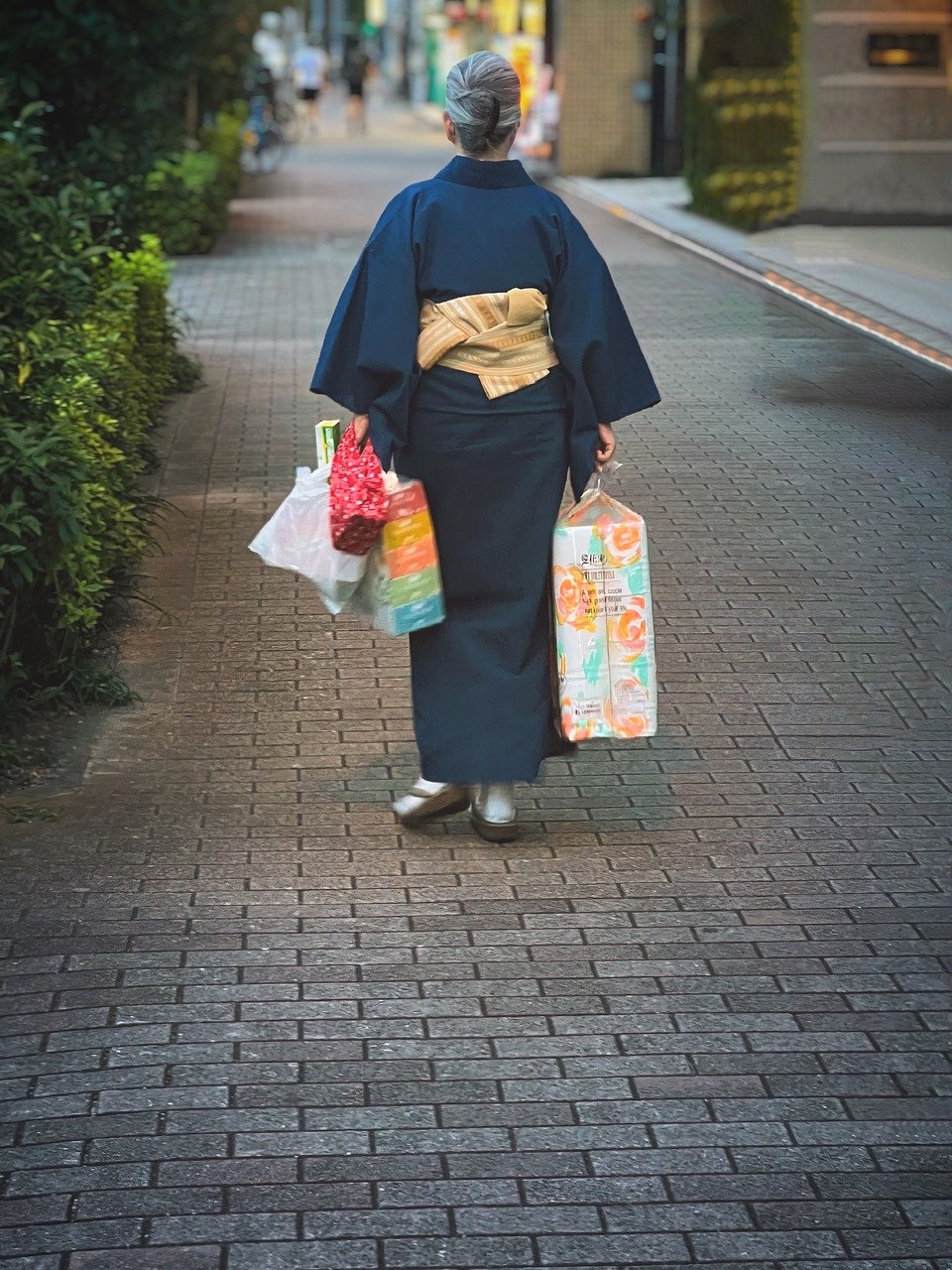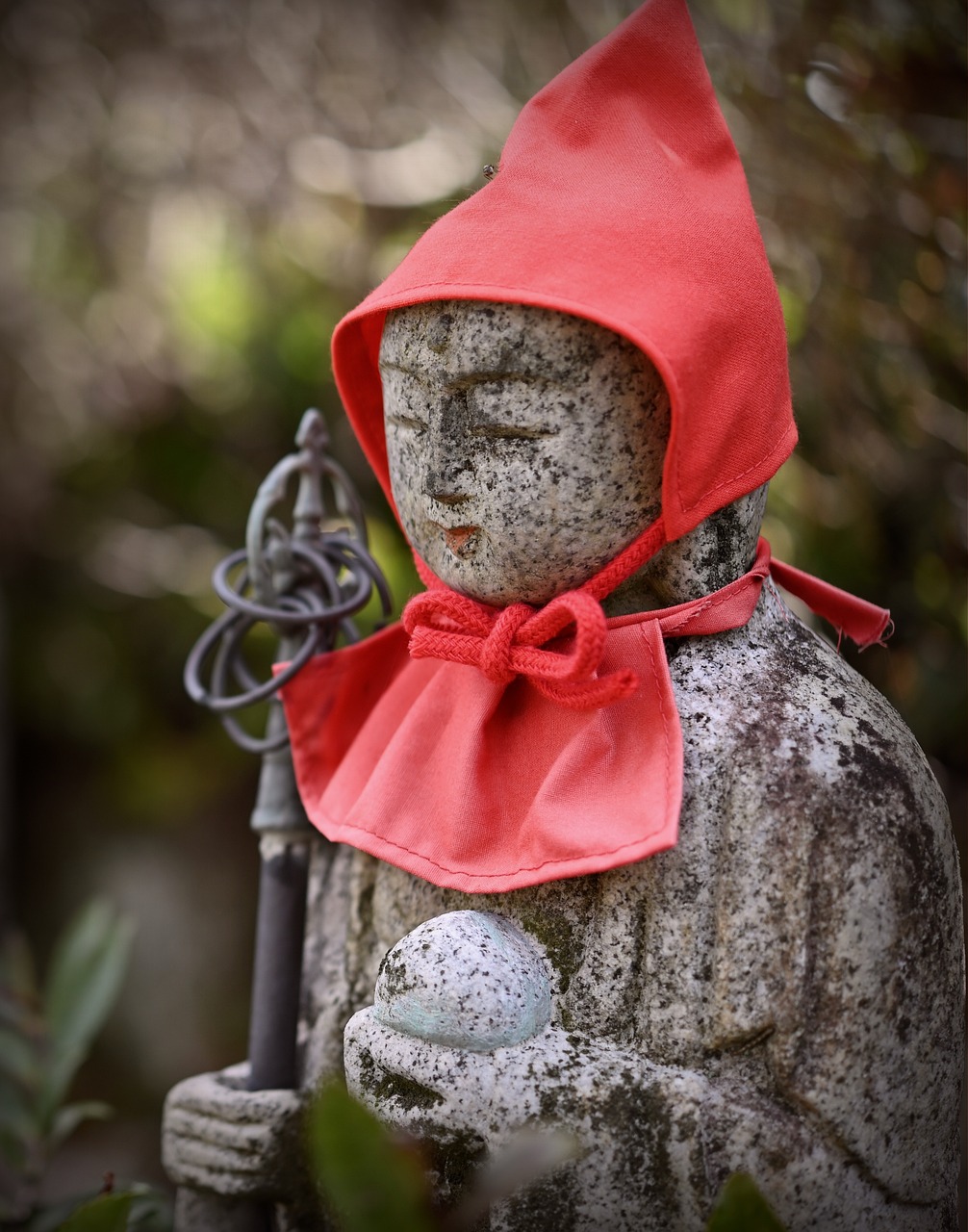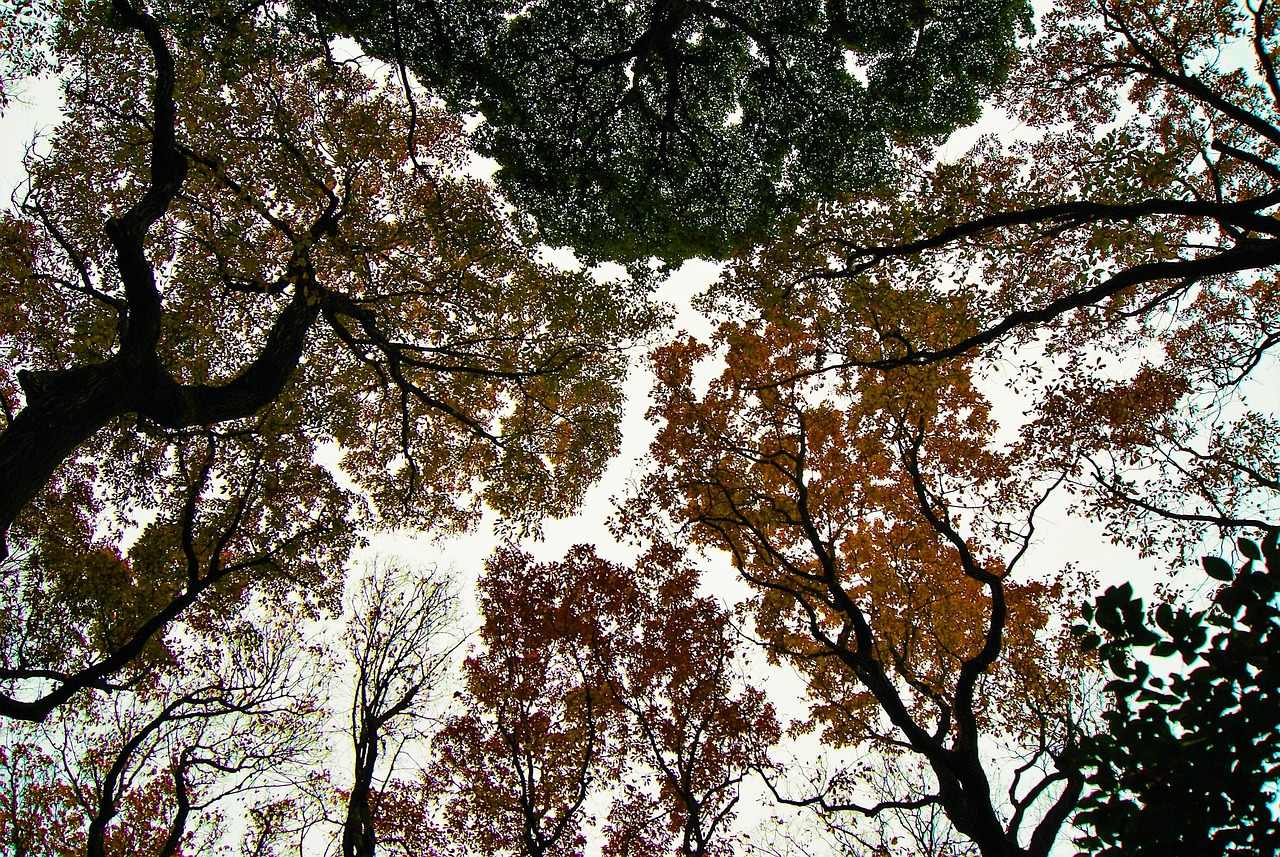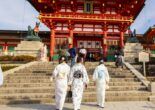It is known as ”Harajuku for grandmas”, but Sugamo is not just a stop on the Yamanote line, it is one of the most vibrant places in north central Tokyo – and a paradise for those who want to experience what Tokyo was like a couple of generations ago.

Say Sugamo and there is a gleam in the eyes of long-time Tokyo residents and natives. This station on the Yamanote line is known as Harajuku of the Grandmothers, mostly for its Showa-style fashion stores.
![]()
Sugamo is one of the stops along the Yamanote line
The main claim to fame of Sugamo is the Jizodori shopping street, which starts one block from exit A4 if the subway station. Make sure not to start at the wrong side of Nakasendo (route 17), as the easiest way of crossing the road is going back down into the subway station.
Old Nakasendo Road
The shopping street is located on the old Nakasendo, which was one of the five great roads leading out of Edo. These roads were paved and surrounded by trees, and led from one checkpoint to another. Travel in the Edo-era Japan was possible only if you had a pass stamped by the office of the local damiyo, or feudal lord. Such passes were given to official members of entourages, couriers, merchants, and people on religious pilgrimages – which became a popular way of sightseeing and visiting different parts of the country. On foot, because horses were reserved for the samurai, and wagons would not have worked on the paving.
The Nakasendo is one of two roads which led to Kyoto from Edo. It was an inland road and the longer of the two, but there was no need to ford any rivers, and in summer it would have been considerably cooler, making it popular among travelers. This is why it starts in Sugamo and leads north over what would have been farmland during the Edo era.
Shopping Street Today
The other road was the Tokaido road, roughly where todays Shinkansen trains run, along the seashore to Kyoto and Osaka. The Nakasendo, however, leads inland across the Kanto plain before veering south in Gunma and passing through Nagano, Gifu, and Shiga before entering Kyoto.

Showa-style buildings abound along the Jizodori.
Today the shopping street is filled with stores and restaurants aimed at local residents – but also people who come visiting from all over Tokyo and beyond, and who want to experience a slice of bygone Japan. In keeping with the street style, the stores along the street are traditional, and the Showa retro stretches all the way to Itabashi. The shops thin out considerably as you pass the Koshinzuka subway station, however.
Showa-Style Shopping
Many of the stores and restaurants not only keep Showa-style offerings, but also Showa-style pricing, making this a cheaper shopping and eating experience than many other places in Tokyo. Inflation is slowly biting in Japan too, and while prices were largely unchanged in many areas from the end of the cheap money of the ”bubble era” until the beginning of the 2020’s, inflation is making a slow comeback and prices are inching up – even in the old peoples areas.

Sugamo is known as “Harajuku for Grandmas” for its Showa-style shopping
Japan is famously full of old people, and the population pyramid keeps skewing towards advanced age. Low birthrates and the well-known Japanese longevity dors not help. Salaries and pensions are not keeping up, but often foreign visitors make up for the difference. Take the chance to experience the traditional Japanese style before the shopkeepers and restaurant owners retire, but do not expect any English menues or even English knowledge, beyond the most rudimentary.
Healing Buddha Powers
If you turn right a couple of blocks after entering the Jzodori, you come to the Jizoson temple (formally Togenuki Jizoson Koganji temple), a small temple dedicated to Jizo, the Boddhisavatha (or Buddha-in -waiting) who is the patron saint and protector of dead children. But he is also the protector and liberator of the souls of people in hell. Perhaps that is why one of the statues on the grounds of the Jizoson is believed to have healing powers, making your pains go away if you wash it.

The temple and the shopping street are named for the Buddhist saint Jizo
If you continue past the temple and cross Nakasendori, you come to the Sugamo Heiwa Reien (or Somei) cemetery. This was originally the grounds of the Honmyoji, Jigenji, and Kodokuin Tokyo Betsuin; the grounds were turned into a cemetery at the end of the 19th century. Before the Meji restoration, however, they were part of the outer green circle established by Tokugawa Ieyasu when he moved the capital of Japan to Edo, and played the role of protecting Edo castle both in the physical and spiritual dimensions. Thanks to being temples, they could be expected to keep evil spirits at bay; and the grounds made them a good area for sorties against an attacking enemy.
Different Religion Graves
The Somei cemetery is unusual in that it houses graves from different religions, and is run by the city of Tokyo. Most grave sites in Tokyo belong to the Buddhist temples. Several of the graves in the Somei cemetery belong to famous authors and media personalities, and there is a constant stream of visitors to their graves. In cherry blossom season, the cemetery is a cloud of pink and white, bringing visitors from all over Tokyo and the world.

The cherry blossoms is one reason to come to Somei cemetery, but remember it is a graveyard.
If you do come to enjoy the cherry blossoms, make sure to behave accordingly and respect the location. Cemeteries are no place for picnics or drinking parties, and as usual in Japanese public locations, there are no garbage cans or litter boxes. You are expected to be responsible and take care of your own garbage.
Ghosts Haunting Litterers
As an added motivation, remember that in Japan cemeteries are full of ghosts and yokai, spirit beings personifying aspects of life. Visiting a cemetery at dusk – and the Somei cemetery is a convenient location – can make you feel like you happened into an episode if the “Ge Ge Ge no Kitaro” anime, especially when the crows start cawing. It is no coincidence that the original name of the manga was “Hakaba Kitaro”, Graveyard Kitaro.
One of the famous people buried in the cemetery is Tokugawa Yoshinobu, together with a number of other nobles and notables, including ”the Nightingale of the Orient” Loduska J Wirick, a Christian missionary who cared for the wounded during the Russo-Japanese War. Neither is known for haunting litterers, however.
Tokugawa Yoshinobu has a special claim to fame, as he was the last shogun of Japan. He is not only buried there, but also made his home in Sugamo after resigning in 1867 (although he later moved, since he was bothered by the noise from the newly constructed Yamanote line). Most of the shogun are buried around Zozo-ji near Tokyo Tower, but the splendid gravesites were completely destroyed during the Second World War.
Feudal Reform Failed
Tokugawa Yoshinobu had tried – and failed – to reform the feudal bakufu government, but when the Shogunate loyalists lost the short and bloody Boshon war, he gave up and retreated from public life. That did not mean he completely left the Meji restoration to take its course, however. He was still a member of the upper house of the Japanese parliament, which was created to satisfy the old nobles (who were given titles like count, prince, and marquis). They were also given title to the lands they held in Tokyo for their bi-annual visits, as well as considerable sums in bonds.
Most of the feudal families have faded into the background, their fortunes squandered and lands sold; but some of them held on to their lands and money. In keeping with Japanese tradition you do not notice them today, although the Tokugawa family (and some others) continue to make up a part of public life, and members of the family (who do not attempt to gain public positions) sometimes appear on TV to reminisce about their great-grandfathers’ time.



